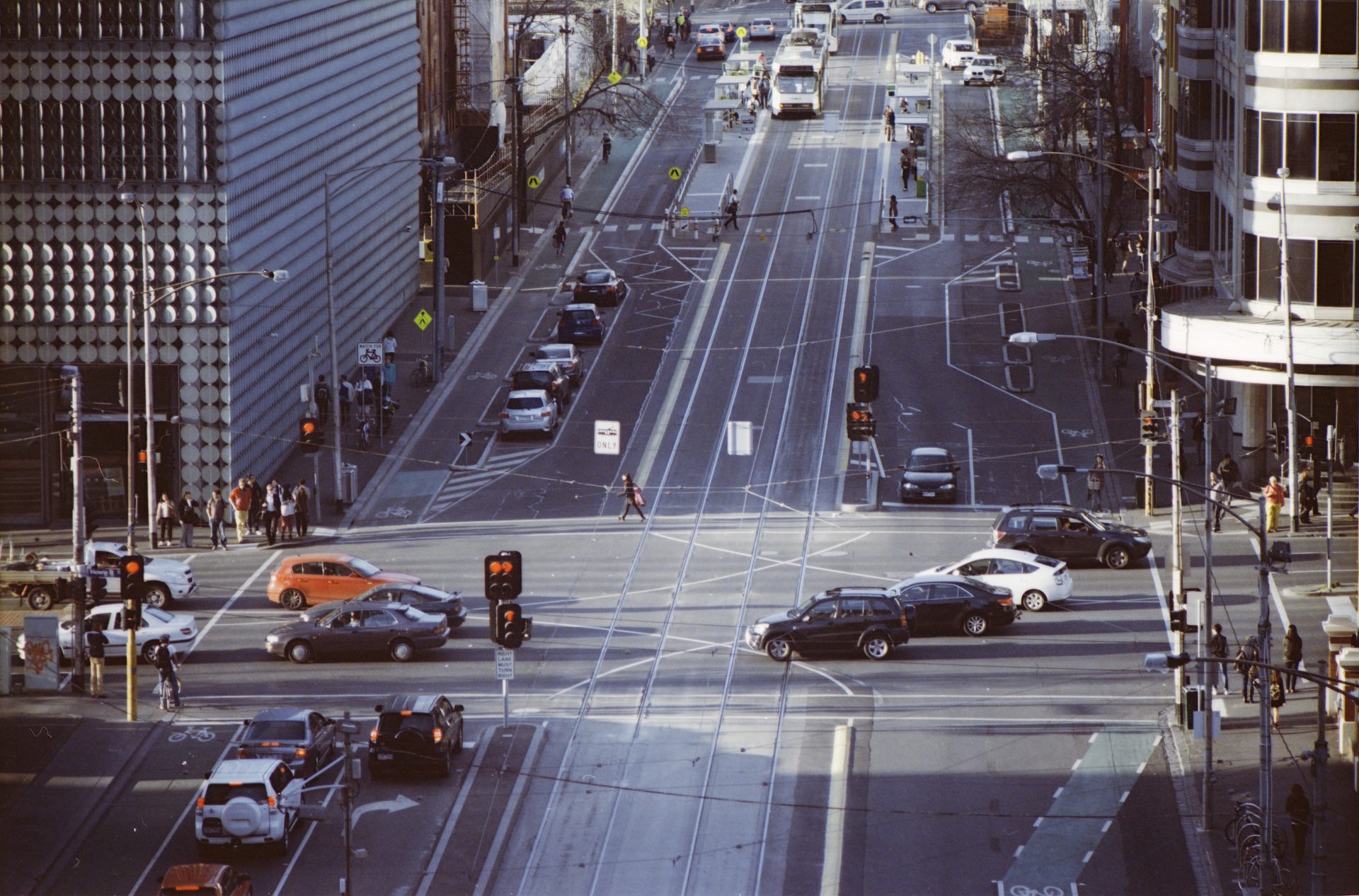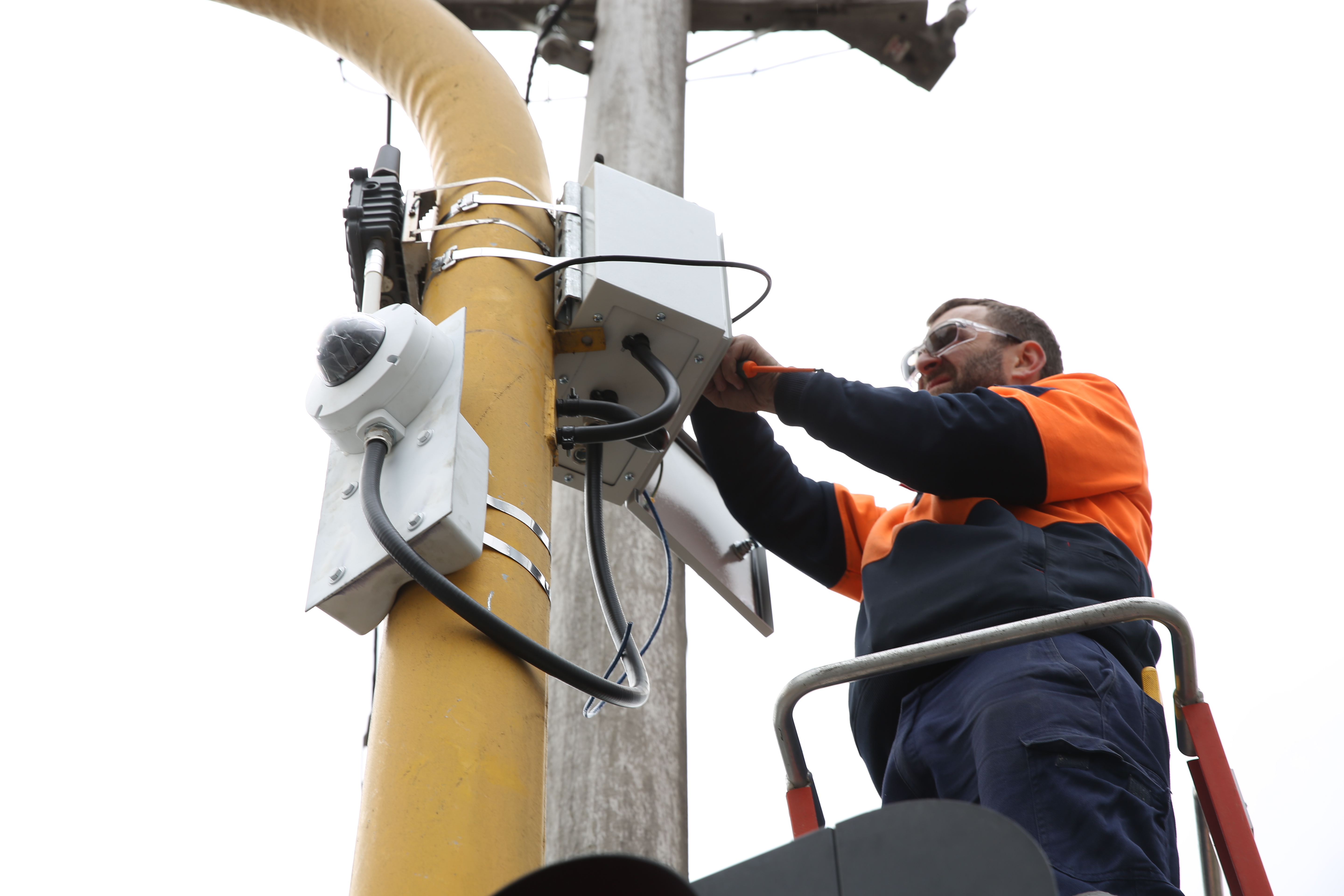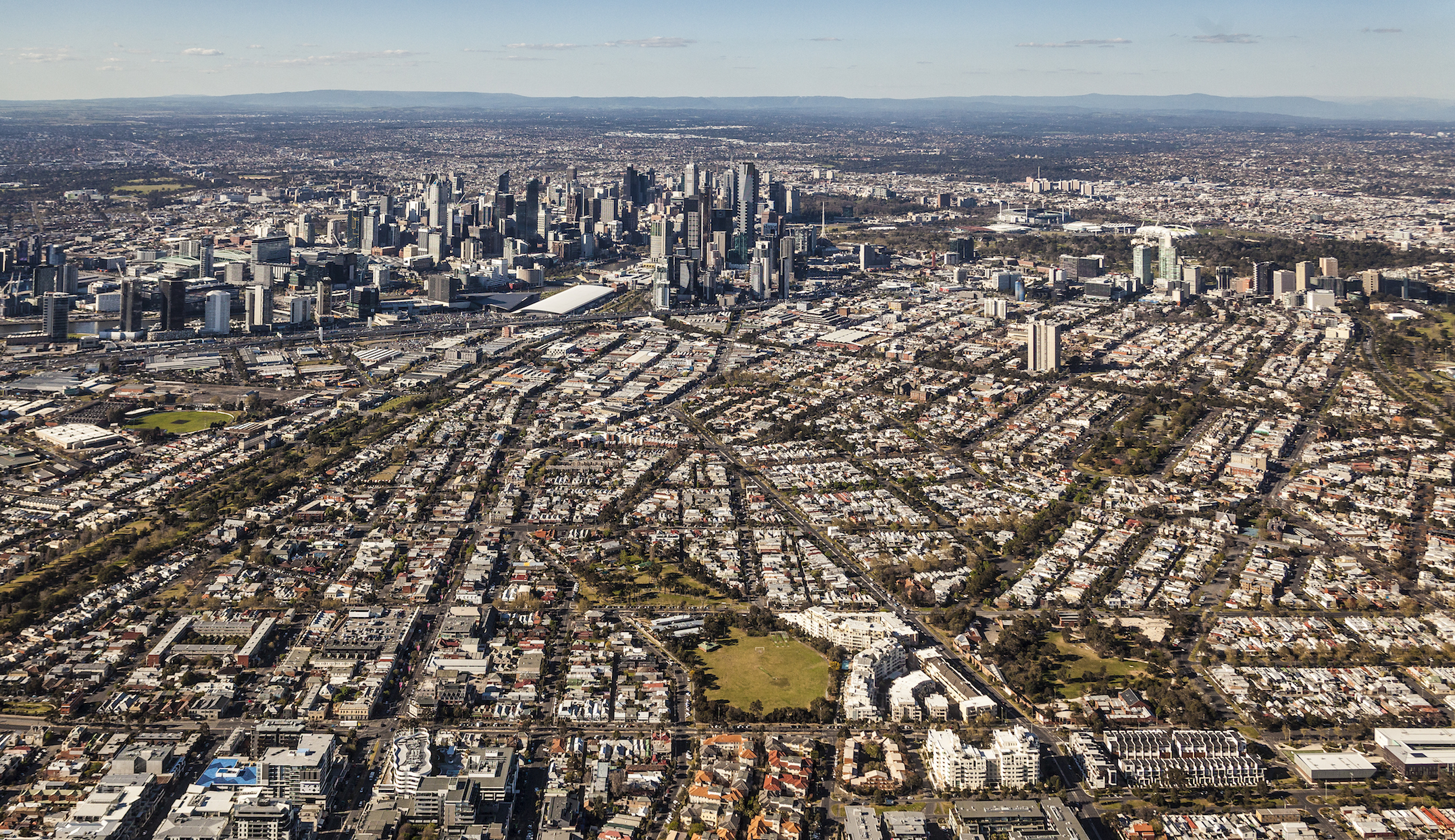
Sciences & Technology
Tackling human error to stop vehicle accidents

An app that can get you from A to B faster and safer? The technology to transform our burgeoning city transport systems into intelligent networks is already here
Published 6 November 2019
A man is walking, looking at his mobile phone.
He doesn’t see the car coming, he doesn’t see the ‘don’t walk’ sign, he just keeps going into the road.
About 40 metres away is a car driven by University of Melbourne Professor Majid Sarvi. While the pedestrian hasn’t seen the Professor’s car, the car has ‘seen’ him.
A warning sign flashes on Professor Sarvi’s dashboard that there is pedestrian heading across the road against the lights and Professor Sarvi slows down.

At this point Professor Sarvi could have sounded his horn to warn the man, or he could have braked, or maybe done both. But in this instance, he stops and they just waive at each other and smile.
They are both researchers and the test has worked.
In a world first “living laboratory” test, University of Melbourne engineers – in collaboration with Victoria State’s Transport Accident Commission, Department of Transport, Cisco Systems and Cohda Wireless – ran a pilot with cars and people’s mobile phones sensing each other in a ‘real’ urban environment at a busy inner Melbourne intersection.

Sciences & Technology
Tackling human error to stop vehicle accidents
The pilot system was deployed over intersections covering an area of six square kilometres in inner city Melbourne.
It sent a warning to a driver within a tenth of a second of recognising that a pedestrian was heading into danger.
The pilot was ‘real’ in the sense that both the pedestrian and car were real and on the road at the intersection, but the scenario of the pedestrian walking against the lights existed only on a computer.
The pedestrian was actually on a ‘walk’ signal and Professor Sarvi would have stopped anyway. But, the trial confirmed that the system can avoid a potentially life-threatening accident.
“We’d been camped out at this intersection for two days with sensors and devices attached to the traffic light poles, and our roadside computer lab set up at the intersection, so to get this result was really exciting,” says Professor Sarvi from Melbourne School of Engineering.
It means that Professor Sarvi’s ambition to cover Melbourne with a network of sensors that allow pedestrians, bicycles, motorbikes and vehicles to “talk” with each other, wasn’t only feasible but readily doable.
And the network now boasts what Professor Sarvi calls the ‘smartest intersection in the world” with three sensors, two computer processors and two cameras, amounting to 30 components in all.
“For the first time, we have shown that anyone can do this at a public site in the real world, and we can do it now. It isn’t futuristic,” he says.

Environment
Hydrogen: Has its time come?
“We have shown that it works and now we are going to a larger pilot of 10 to 12 intersections where we can crank it up from there.”
The network is being further extended to include a highway road that will bring the total length of road covered to 100 kilometres.
By capitalising on the technology already in our smart phones and connecting it to sensors on the roadside and in vehicles, the system can fully integrate a city’s transport system into what Professor Sarvi describes as a single “ecosystem” of shared communication.
The system, dubbed AIMES (Australian Integrated Multimodal EcoSystem), senses and processes data on the location and speed of pedestrians and vehicles; from there, it can predict a potential accident and issue warnings to prevent it, whether those warnings are going to a driver, a pedestrian, or the AI in a driverless vehicle.

Professor Sarvi says modern vehicles already have the necessary sensing technology built-in and sensors can easily be retrofitted into all manner of vehicles.
He says pedestrians and cyclists could potentially opt into an AIMES network through a downloadable app on their phones. So, a driver could then, for example, receive a warning that a cyclist is in their blind spot.
AIMES would not only make our roads safer but also more efficient, giving drivers and autonomous vehicles early and instant warning of emerging traffic delays, and give planners the means to seamlessly redirect traffic to keep the city moving.

Sciences & Technology
The very human language of AI
And Professor Sarvi says an ecosystem like this is crucial if cities are to integrate the autonomous vehicles in a way that is trusted by the public.
It would enable future scenarios where people could ‘ride share’ autonomous vehicles instead of owning and parking cars, or the goods of the online economy are delivered by autonomous delivery trucks.
It all works by using the Internet of Things, a term which captures the massive expansion of devices that can connect to the Internet, and so, can all connect to each other.
“I’m a transport system engineer, and my research has been all about transport networks and optimising them to get more out of less.
“But, when I came to looking at how to make a big difference to the way our transport systems work, I realised that the answer was to connect everything,” says Professor Sarvi.
“Connectivity is the key to many things when it comes to our cities and moving around them. It is key to safety, key to making autonomous vehicles work, key to tackling congestion, and key to improving the efficiency of the whole system,” says Professor Sarvi.
In their trial, Professor Sarvi and his team used existing Dedicated Short-Range communications technology to wirelessly link cars with roadside data-processing technology supplied by research partners Cisco Systems comprising sensors, computers and routers.

Sciences & Technology
Giving driverless vehicles the human touch
It is a so-called “edge and fog” computing system where the data processing is done completely at the site to ensure signals are processed and sent out to vehicles or pedestrians as fast as possible.
For a vehicle travelling at 50 kilometres per hour (the urban speed limit in Melbourne), a two-second delay means another 28 metres is travelled – and that could be fatal.
“The system needs to be able to take in and give back information within fractions of a second, because if it is any longer, it risks being too late to avoid an accident,” says Professor Sarvi.
But would a network of sensors be a threat to our own privacy? Could this network be used by authorities to track us, or accessed by hackers?
“There is always the risk of information being hacked and misused, and as a society, it is a trade-off between the benefits and the risk,” says Professor Sarvi.

“In terms of the data itself, it would be unrealistic to store the huge amount of data that would be generated, and because it all depends on the technology making local decisions, the data will simply be dumped as soon as it used, so it will just disappear.”
What matters for the system, he says, isn’t the data it generates, but the instant connectivity it provides for decision making; whether it’s humans or artificial intelligence, in the case of the computer-generated warnings and autonomous vehicles.

Business & Economics
Working hard to make work fairer
“What we need to do is stop viewing the transport system from the different perspectives of those running separate networks, whether they be the trams, or trains or roads.
“Instead we need to look at it from the perspective of the user,” says Professor Sarvi.
“Commuters see only one system – a system for getting from where they are to where they want to go. And if it doesn’t work anywhere, for them the whole system doesn’t work.
“And as a commuter myself, I get frustrated. But my frustration about sitting in traffic comes from being a transport engineer – I know there is a huge opportunity to improve the transport system using smart technology.”
Banner: Supplied